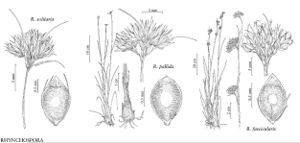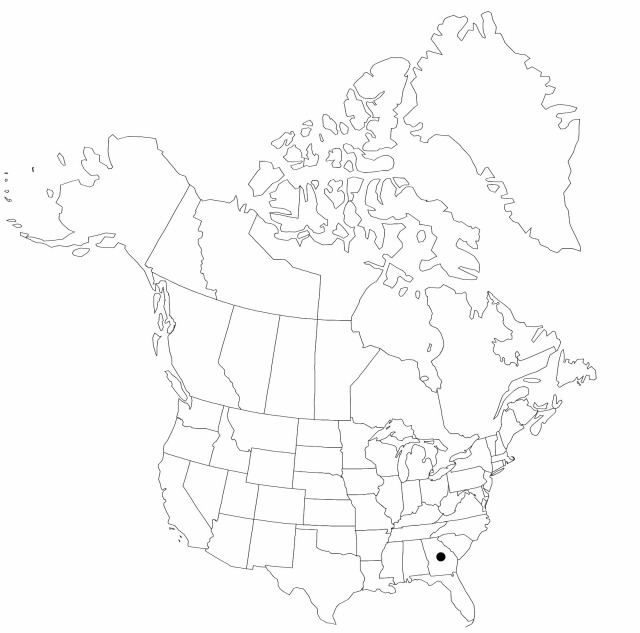Difference between revisions of "Rhynchospora solitaria"
Bull. Torrey Bot. Club 28: 468. 1901.
FNA>Volume Importer |
imported>Volume Importer |
||
| (3 intermediate revisions by 2 users not shown) | |||
| Line 6: | Line 6: | ||
|place=28: 468. 1901 | |place=28: 468. 1901 | ||
|year=1901 | |year=1901 | ||
| + | }} | ||
| + | |special_status={{Treatment/ID/Special_status | ||
| + | |code=F | ||
| + | |label=Illustrated | ||
| + | }}{{Treatment/ID/Special_status | ||
| + | |code=E | ||
| + | |label=Endemic | ||
| + | }}{{Treatment/ID/Special_status | ||
| + | |code=C | ||
| + | |label=Conservation concern | ||
}} | }} | ||
|basionyms= | |basionyms= | ||
| Line 33: | Line 43: | ||
-->{{#Taxon: | -->{{#Taxon: | ||
name=Rhynchospora solitaria | name=Rhynchospora solitaria | ||
| − | |||
|authority=R. M. Harper | |authority=R. M. Harper | ||
|rank=species | |rank=species | ||
| Line 47: | Line 56: | ||
|publication title=Bull. Torrey Bot. Club | |publication title=Bull. Torrey Bot. Club | ||
|publication year=1901 | |publication year=1901 | ||
| − | |special status= | + | |special status=Illustrated;Endemic;Conservation concern |
| − | |source xml=https:// | + | |source xml=https://bitbucket.org/aafc-mbb/fna-data-curation/src/2e0870ddd59836b60bcf96646a41e87ea5a5943a/coarse_grained_fna_xml/V23/V23_425.xml |
|genus=Rhynchospora | |genus=Rhynchospora | ||
|species=Rhynchospora solitaria | |species=Rhynchospora solitaria | ||
Latest revision as of 20:40, 5 November 2020
Plants perennial, solitary or cespitose, 50–60 cm; rhizomes absent. Culms erect to ascending, narrowly linear, wandlike, terete, leafy proximal to middle. Leaves erect to ascending; blades proximally flat, 2.5–3.5 mm wide, apex tapering, tip abruptly blunt. Inflorescences terminal, cluster of spikelets crowded, broadly turbinate to hemispheric, to 1.5 cm wide; leafy bracts linearsetaceous, slightly exceeding cluster. Spikelets orangebrown, lancefusiform, 6–7 mm, apex acuminate; fertile scales lanceovate, 4–5 mm, apex acuminate with excurved awn to 1 mm. Flowers: bristles 3–4, some reaching tubercle tip, antrorsely barbellate. Fruits 1–2 per spikelet, 2–2.1 mm; body brown with paler center, obovoidlenticular, 1.5–1.7 × 1.2–1.3 mm, margins flowing to tubercle; surfaces finely transversely striate with minute pits; tubercle lowtriangular, 0.3–0.5 mm.
Phenology: Fruiting summer–fall.
Habitat: Sandy peat of depressions in pine flatwoods savannas, edges of hillside bogs
Elevation: 0–200 m
Discussion
Of conservation concern.
Rhynchospora solitaria appears to be the least common North American species of Rhynchospora with two of the five given localities apparently lost. The name “solitaria” is deceptive; the plants sometimes form small tufts of culms. The most distinctive feature in the field is the attractive orangebrown color of the narrow, acuminate, bristlescaled spikelets.
Selected References
None.

